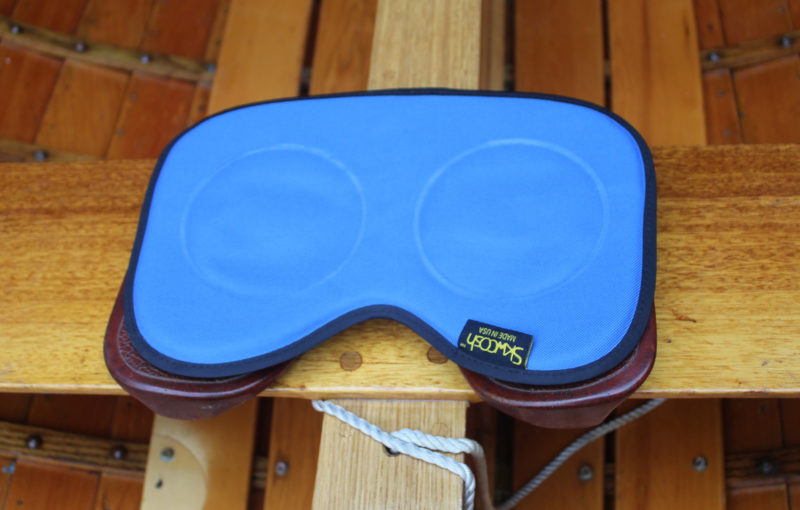 all photographs by the author
all photographs by the authorThe Row Pad is sized to fit racing-shell seats and has a non-slip bottom to keep it in place.
One of the things I learned from my long paddling and rowing trips was that the body adapts to the demands put upon it. Muscles get stronger, hands develop callouses, and heart and lungs get more efficient. The one thing that didn’t adapt was my butt. The farther I got into a 4 1/2-month paddle down the East Coast, the more padding I needed. I kept an eye out for new home construction along the Intracoastal Waterway and when I found job sites I went dumpster diving for scraps of foam carpet pad.
Skwoosh is a company dedicated to eliminating pains in the butt, and to that end developed TekPad gel. The gel contains tiny air-filled balloons and is sealed into flexible packs in a wide variety of seat pads including the AGP Row Pad and the Kayak Pad.
Rowing puts intermittent pressure on the tailbone and constant pressure on the ischial tuberosities or sitz bones. The tailbone is easily taken care of: Just cut away the portion of a seat pad that the tailbone touches. Skwoosh uses the packs of TekPad gel to ease the pressure on the sitz bones. The Master AGP Row Pad is 5/8″ thick and has two 4 1/4″ circular gel pads. If you squeeze the foam padding that surrounds the gel pads, it will push pack; squeeze the gel pads and it will yield. It feels a bit like squeezing a tube of toothpaste. While the gel provides some cushioning, it’s the way that it moves that makes the Row Pad effective.
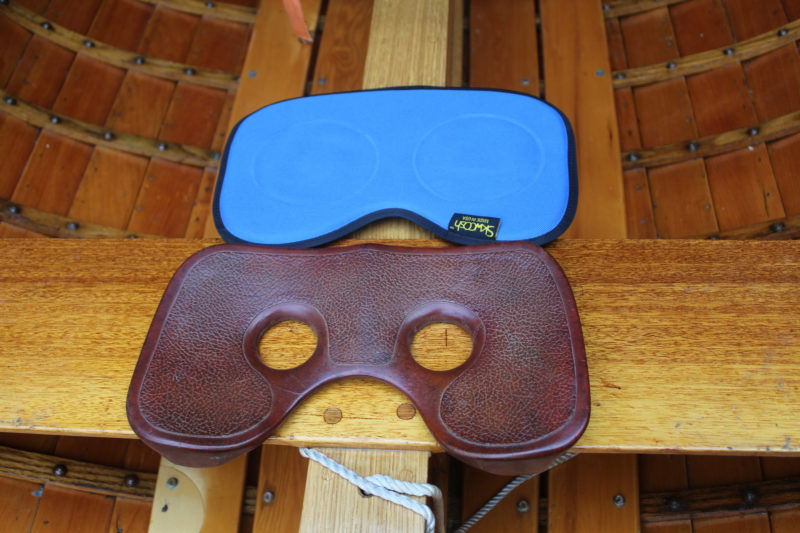
The molded rowing seat is a vast improvement over a bare thwart and the Row Pad adds an equal measure of comfort on top of that.
Using my 14′ Whitehall as a test platform I’ve used the Row Pad on its own and along with a racing shell seat. Anything is better than sitting directly on the thwart. Without any paddling I feel the pressure of my sitz bones bearing against my gluteus maximus muscles and the skin over them. Just sitting on the thwart with my legs relaxed isn’t so bad, but rowing makes the pressure much more acute. At the catch I lean at my hips and, as I tilt my pelvis aft, my knees rise. The angle between my back and legs gets more acute, my glutes stretch and thin over my sitz bones and the pressure increases. Almost any padding helps, but foam tends to push back, so where the pressure is the highest, the foam exerts the most resistance. The gel moves away from the pressure points and, a bit like a waterbed, exerts the same amount of pressure wherever there’s contact. By itself, the Row Pad makes a big difference even though it is on 5/8″ thick. I can feel the gel moving back and forth as my sitzbones rock on it. It even pops, much like synovial fluid does when you crack your knuckles. The RowPad is meant to be used in conjunction with a racing shell seat and that’s a winning combination. I often use a racing shell seat when I’m rowing from a fixed thwart; its notch keeps the tailbone free of contact and its holes take some of the pressure off the sitz bones like a ring of moleskin does for a blister. But the rocking of the pelvis that occurs during the stroke kneads the glutes against the edges of the holes in the racing shell seat, particularly at the catch where the glutes are at their thinnest.
A Row Pad set on top of the racing shell seat gets the benefit of the seat’s sculpted shape. Cushioned by gel and cradled by contours, my butt feels like it’s all one unit, not made up of moving pieces wearing against one another. The combination would be quite well suited to the long haul in either a fixed-thwart or a sliding seat rowing boat.
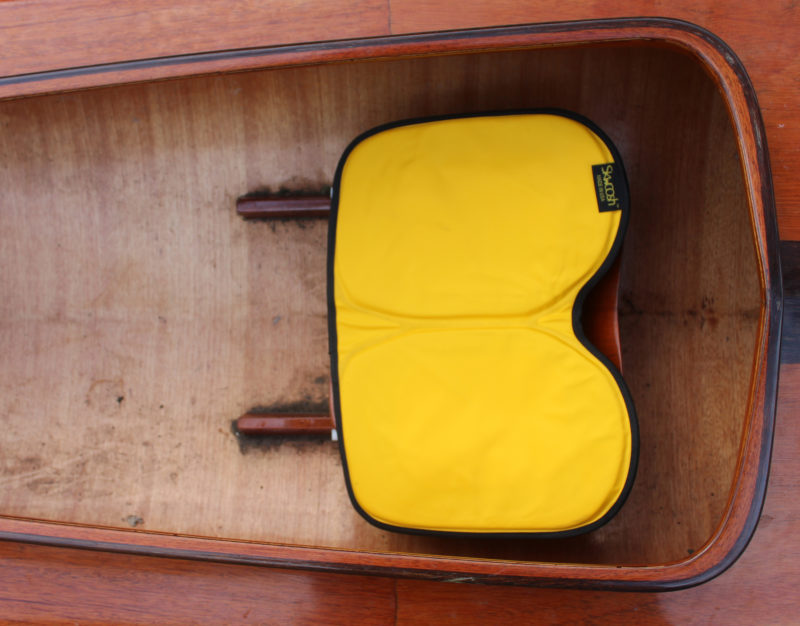
The Kayak Pad adds warmth and comfort and minimizes friction. It has a loop for a tether to prevent loss in a capsize.
The Kayak Pad is 5/8″ thick and has a non-skid bottom and a slick yellow top. Like the Row Pad, it is meant to be used in conjunction with a contoured seat. I’ve used the Kayak Pad aboard a Struer Freedom, a molded wooden kayak with a racing-style cockpit and seat. The seat has plenty of contour and I’ve never found it uncomfortable. It helps that paddling a kayak doesn’t set the pelvis rocking back and forth. The kayak stroke calls for torso rotation, and in a racing kayak the hips also rotate as the leg muscles are engaged to add their power.
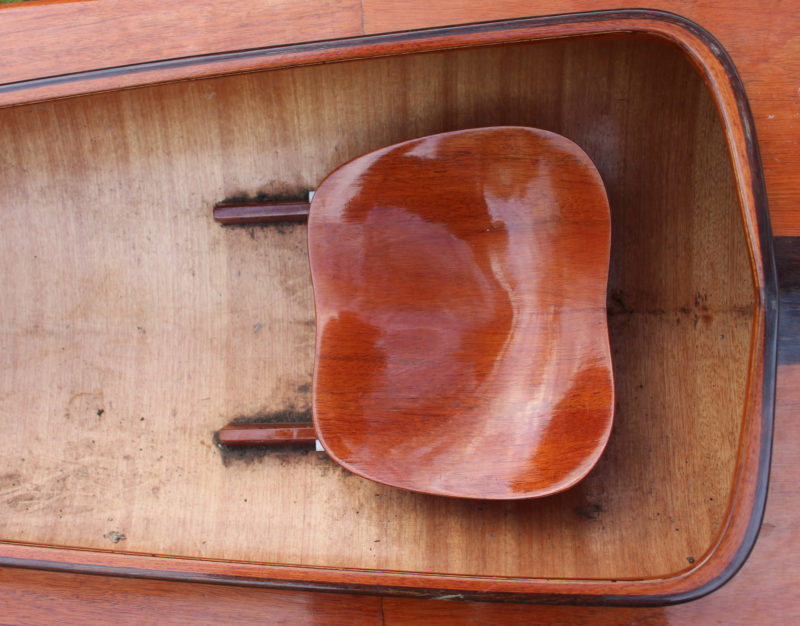
My Struer’s molded wood seat has deep contours and is fairly comfortable by itself but it isn’t slippery enough for effortless hip rotation.
I’ve been doing my paddling with the Kayak Pad in cold weather, and the first thing I’ve noticed is the warmth of the pad. The wetsuit pants that I wear don’t slip on either the varnished wooden seat or on me, so I feel some of the hip rotation happening between my sitz bones, glutes and skin. The pad’s slick fabric lets the neoprene pants slip easily, so there’s no friction to put my knickers in a twist either literally or metaphorically.![]()
Christopher Cunningham is the editor of Small Boats Monthly
The Master AGP Row Pad ($39.99) and the Kayak Pad ($34.99) are available from Skwoosh and from retailers in the US and Australia.
Is there a product that might be useful for boatbuilding, cruising or shore-side camping that you’d like us to review? Please email your suggestions.
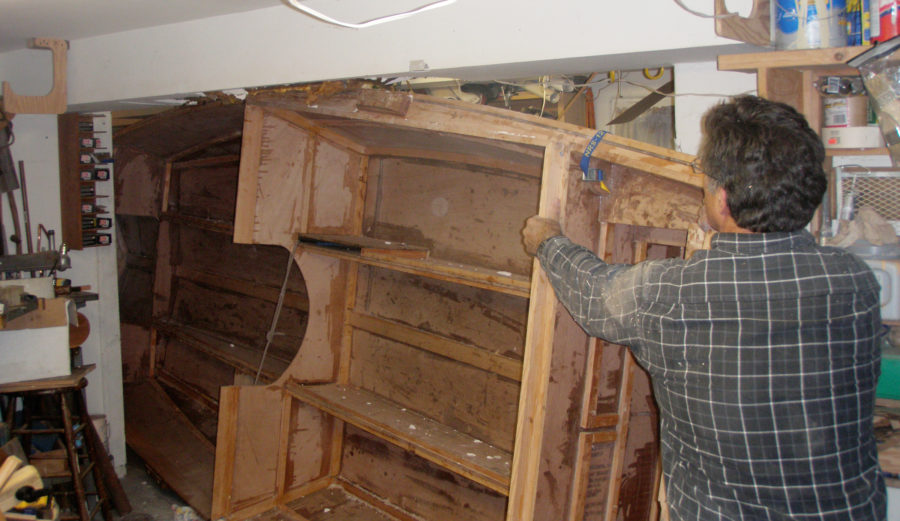
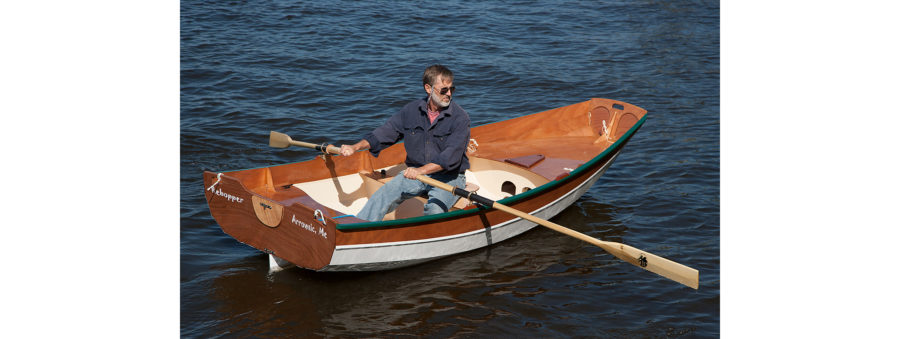
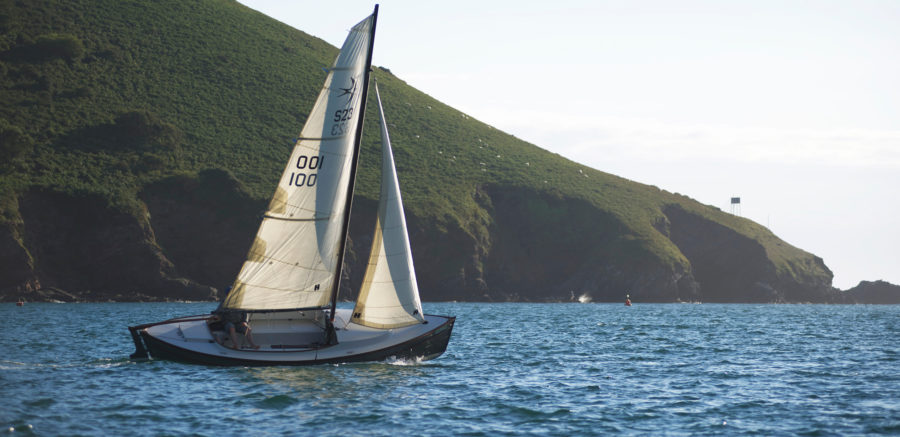
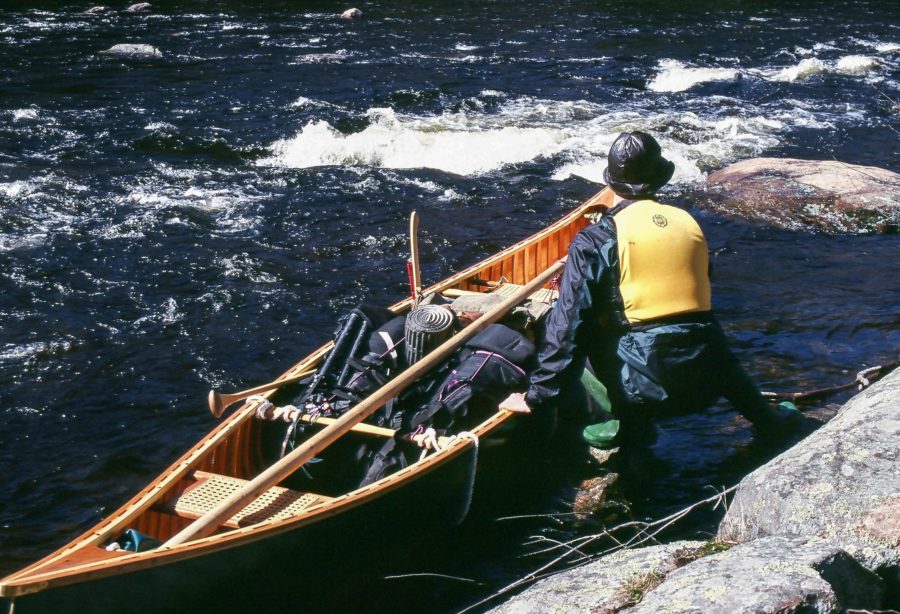
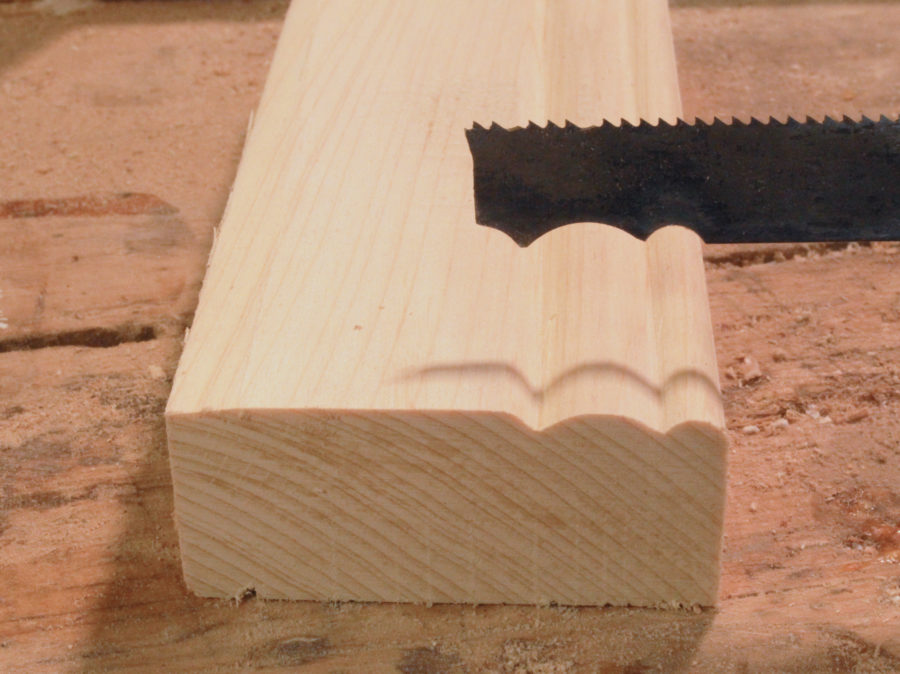
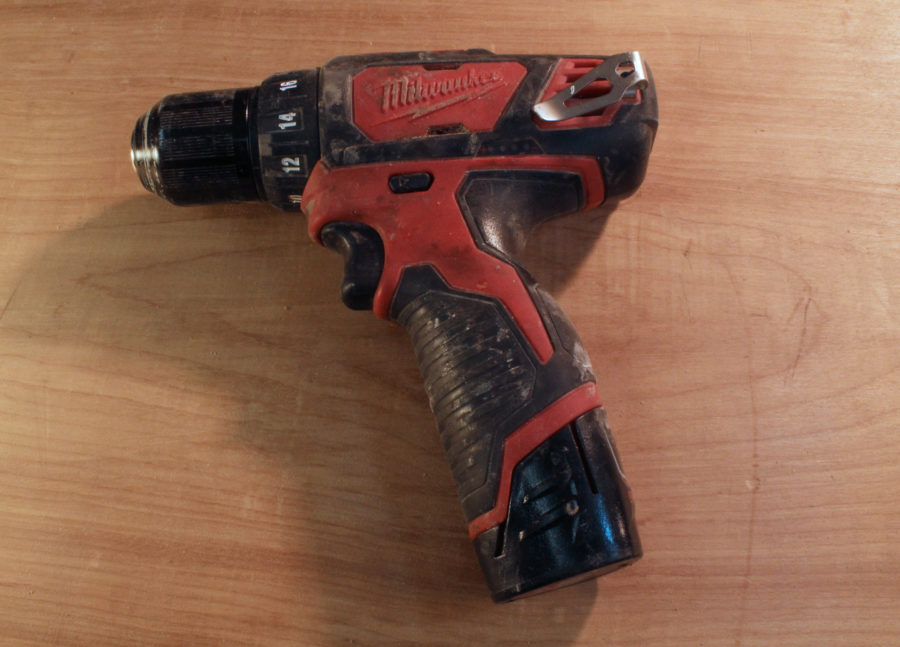
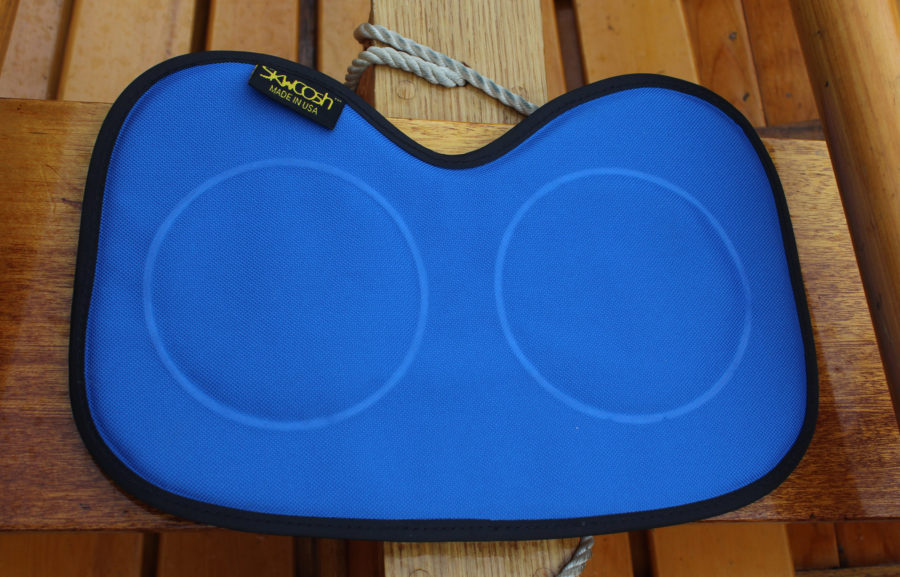
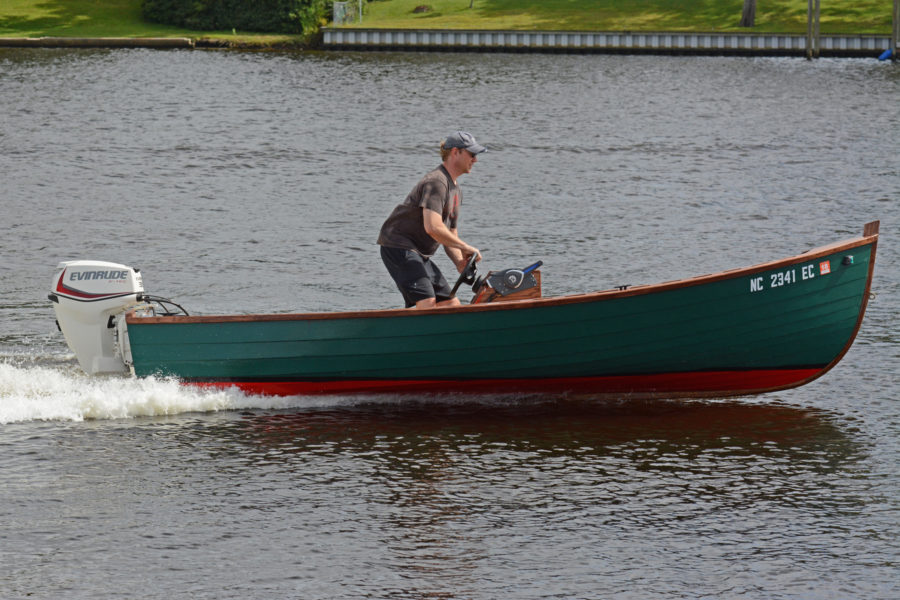
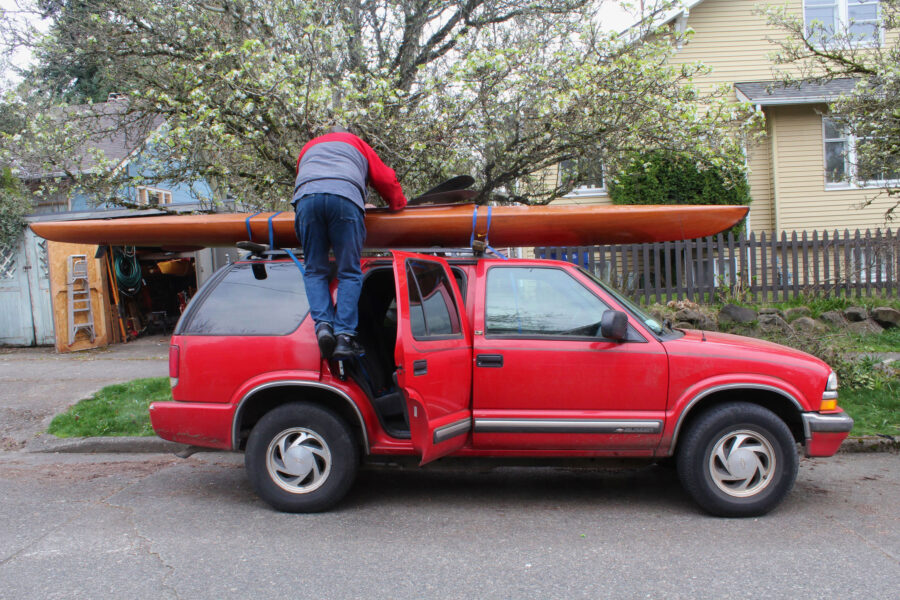
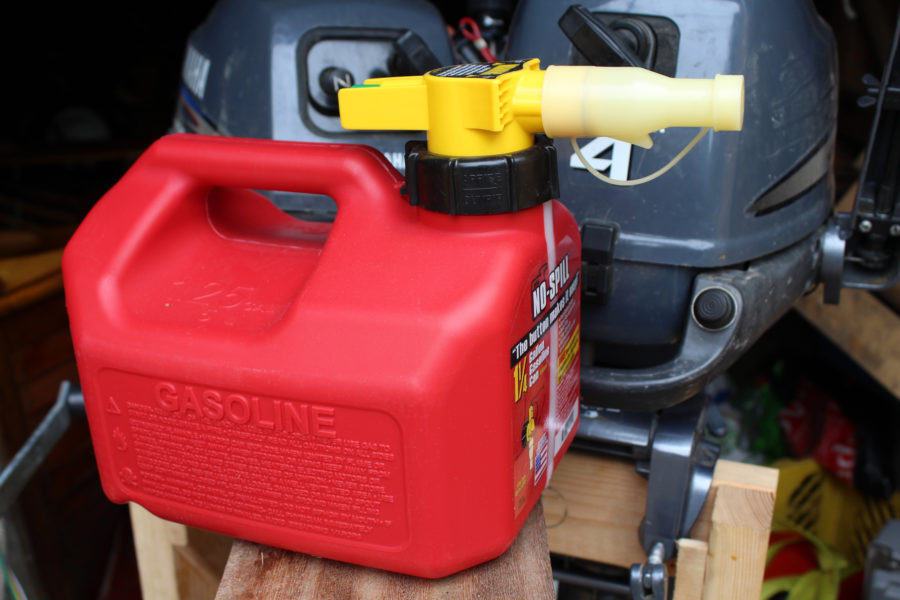
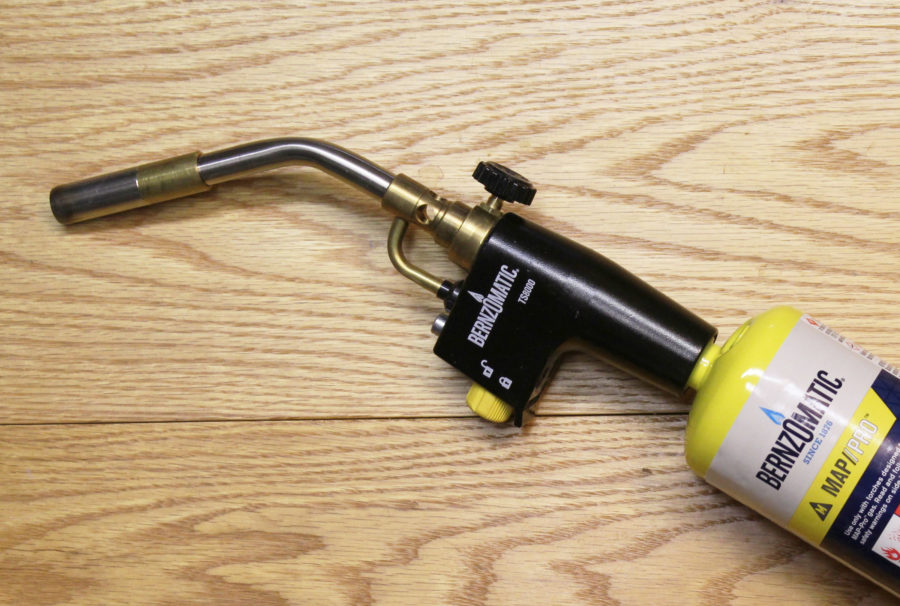
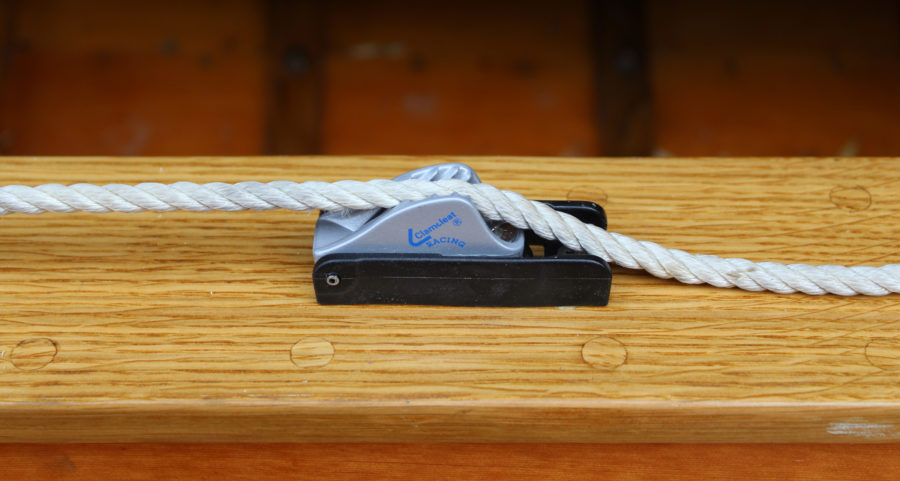
I have been using the Thermarest Trail Seat, an inflatable cushion designed for a variety of uses. A lot of kayakers use them, and I find it very comfortable rowing, used on a regular thwart. I usually row about 3 miles; it’s very good for this distance.
Oh, wow, I’m getting one of those. After spending 27 hours straight sitting in one spot during an Everglades Challenge (EC) and 5 days on a dinghy side-deck in the Texas 200—both times using a disagreeable seat—so I consider myself an expert in this matter. During the EC I sat on a throwable flotation cushion and discovered that while it worked for a 4-hour cruise at home,it becomes agony after a bit more than that. You never consider how hard a “soft” flotation cushion can get. My Texas 200 began on the hard side-deck of a tiny boat, “cushioned” by a scrap of sleeping bag pad which permanently flattened to 1/8″ thickness in half a day. The next day I inflated an air-cushion (from REI) which was very comfy but rolled under my butt (like a bulldozer tread) and always threatened to roll me into the sea if I wasn’t careful. Stay focused while sailing small boats and take care of your butt! It’s right up there with avoiding heatstroke and hypothermia!
I found the Oniva seat works great for a kayak seat. I’ve haven’t yet used it for more than two hours, but it is the first seat in any kayak that did not leave me numb and aching. It also has an adjustable back rest built in.